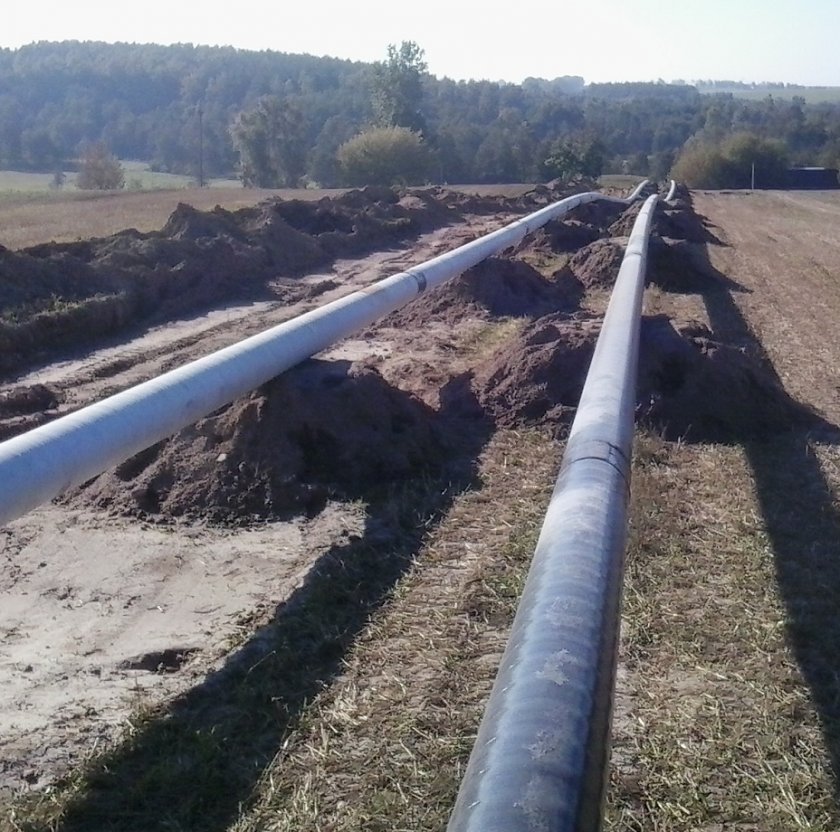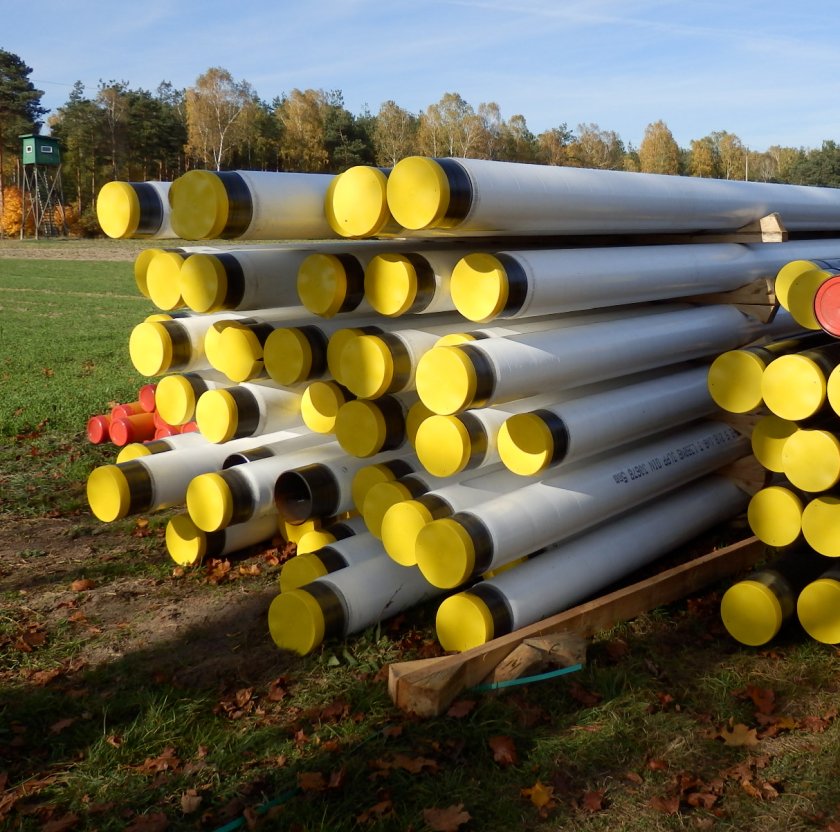Optical fibre applications for gas pipeline diagnostics
 Fot.
Fot.
Optical fibre stress measurement systems work by exposure of optical fibres to strain, which scatters the light within the optical fibres. While the phenomenon of strain-induced light scatter is unfavourable in data transmission applications of optical fibres, it allows applying optical fibres for measurement of stress and determination of strain (including the elastic modulus of strained materials), not unlike standard resistive strain gauges. Over the years, a number of researchers worked on a physical definition of the light scattering phenomenon. Several different definitions of light scattering mechanisms were developed – including those by Rayleigh, Brillouin, and Raman.
In practical terms, the strain of an optical fibre is determined by measuring the quantity of light which is reflected from the discontinuities (defects) within the optical fibre with dedicated reflectometers the outputs of which are processed by special software.
Depending on the specific method, the measurement is based on artificially created discontinuities (a fibre Bragg grating (FBG), comprising a series of precisely spaced bands fabricated on an optical fibre surface to change its refractive index), or natural discontinuities present within the volume of an optical fibre.
For FBG, the measurement is a point one as it is limited to the area covered by the grating.
Depending on the specific method, the measurement is based on artificially created discontinuities (a fibre Bragg grating (FBG), comprising a series of precisely spaced bands fabricated on an optical fibre surface to change its refractive index), or natural discontinuities present within the volume of an optical fibre.
For FBG, the measurement is a point one as it is limited to the area covered by the grating.
The wavelength of light varies between the light reflected from the FBG bands and the areas between the FBG bands. It also varies with the changes in the spacing of the FBG bands (caused by strain). More than one FBG can be fabricated on an optical fibre to produce more measurement points. FBGs must be fabricated with a very high accuracy which makes this type of sensor expensive.
Optical Fibre Sensors (OFS) use the light scattering caused by natural defects (discontinuities) within the optical fibre material (here, the light scattering mechanism is most often based on its physical definition by Rayleigh or Brillouin). A defined length of the optical fibre becomes an OFS (where the number of natural microdiscontinuities can be as high as 1000 FBGs per 1 linear metre).
Optical Fibre Sensors (OFS) use the light scattering caused by natural defects (discontinuities) within the optical fibre material (here, the light scattering mechanism is most often based on its physical definition by Rayleigh or Brillouin). A defined length of the optical fibre becomes an OFS (where the number of natural microdiscontinuities can be as high as 1000 FBGs per 1 linear metre).
Continuous measurement of strain is possible, and the measured strain can be pinpointed with accuracy ranging from ten-odd micrometres (in a 20-metre long OFS) to several dozen centimetres (in an OFS that is several to ten-odd kilometres long). There is a defined relationship between the light scattering within an optical fibre and the optical fibre temperature; a strain-free OF (which lays loose) can serve as a continuous temperature sensor.
Optical fibre measurements are applied in many areas of engineering, especially in civil structures (such as bridges, overpasses, towers, masts, etc.). They enable continuous or periodic monitoring of structural strain. Optical fibres are durable and have good resistance to chemicals. They are also relatively cheap (for OFS measurement applications) and do not require recalibration.
Optical fibre measurements are applied in many areas of engineering, especially in civil structures (such as bridges, overpasses, towers, masts, etc.). They enable continuous or periodic monitoring of structural strain. Optical fibres are durable and have good resistance to chemicals. They are also relatively cheap (for OFS measurement applications) and do not require recalibration.
In gas pipelines, optical fibres can detect and find gas leaks (by temperature measurement) or measure stress to determine strain from soil displacement (in areas of mining-induced subsidence or landslides). Optical fibres enable monitoring of kilometres of gas pipelines by linearly continuous testing (and precise pin-pointing) of temperature and strain variations.
OF-based measurements technologies include installation of optical fibres on the gas pipeline surface with dedicated adhesives (not unlike those intended for fastening of electric resistance wire strain gauges) or without adhesive bonding, with the optical fibres embedded in a three-dimensional core laid on the gas pipeline.
OF-based measurements technologies include installation of optical fibres on the gas pipeline surface with dedicated adhesives (not unlike those intended for fastening of electric resistance wire strain gauges) or without adhesive bonding, with the optical fibres embedded in a three-dimensional core laid on the gas pipeline.
There is research in progress into the experimental verification of the feasibility of measurement application in gas pipelines potentially exposed to elevated external loads.
Sources:
[1] Fights On Logistics „Badania NDT. Diagnostyka SHM. Ekspertyzy techniczne. Prace badawczo-rozwojowe”
[2] Luna https://lunainc.com/fiber-optic-solutions/optical-backscatter-reflectometer-benchtop/
[3] FBGS https://fbgs.com/components/strain-sensor-sg-01/
Sources:
[1] Fights On Logistics „Badania NDT. Diagnostyka SHM. Ekspertyzy techniczne. Prace badawczo-rozwojowe”
[2] Luna https://lunainc.com/fiber-optic-solutions/optical-backscatter-reflectometer-benchtop/
[3] FBGS https://fbgs.com/components/strain-sensor-sg-01/



